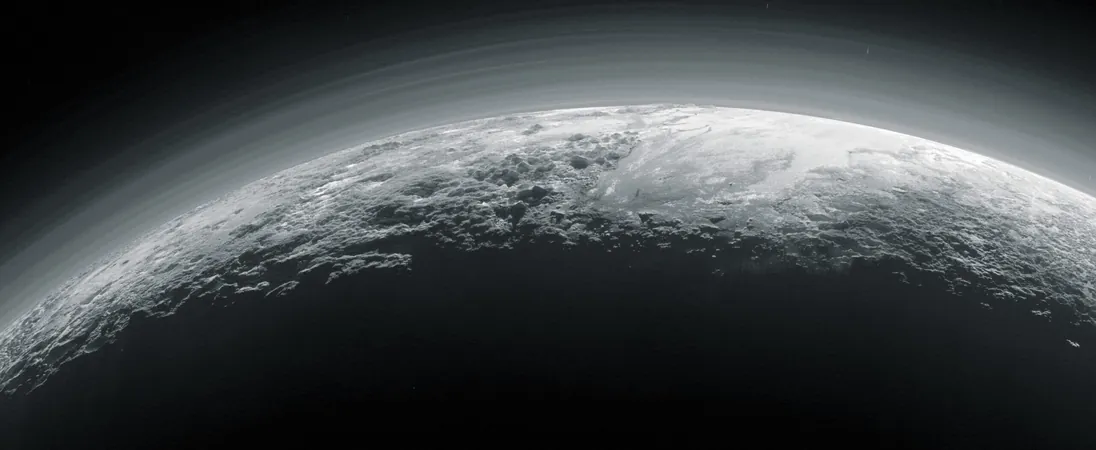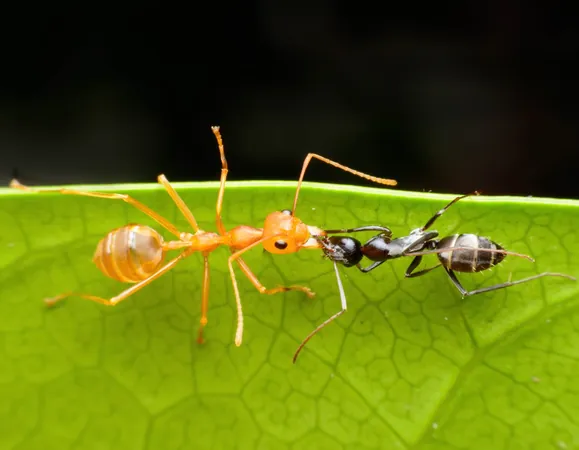
Pluto's Bizarre Haze: Groundbreaking Discoveries from the James Webb Space Telescope!
2025-06-03
Author: Yu
NASA's James Webb Space Telescope Reveals Pluto's Secrets
In a groundbreaking reveal, NASA's James Webb Space Telescope (JWST) has unveiled astonishing phenomena on Pluto, showcasing seasonal cycles and mysterious interactions with its moon Charon that have never been witnessed before in our solar system.
A Revolutionary Confirmation of Pluto's Atmospheric Mysteries
Recent studies from an international team highlight these exotic conditions, with new data confirming predictions made by UC Santa Cruz's Xi Zhang regarding Pluto's unique atmospheric haze. Zhang's theories, sparked by the 2015 flyby of NASA's New Horizons spacecraft, suggested that haze particles could significantly alter Pluto's atmospheric dynamics.
While his original ideas met skepticism, the JWST's capabilities, launched on Christmas 2021, have confirmed Zhang's bold claims, marking a rare and exciting validation in planetary science. "It’s not every day that a hypothesis is confirmed so quickly, and we’re thrilled!" Zhang exclaimed.
Pluto: A World of Unmatched Geological Diversity
The 2015 flyby had already revealed Pluto’s dramatic landscapes filled with basins, mountains, and active geological features. Its atmosphere, rich in nitrogen and methane, is fashioned from photochemical reactions that are surprisingly similar to that of Titan, Saturn's largest moon. In contrast, Charon stands devoid of atmosphere, showcasing a more uniform surface predominantly composed of water ice.
Photos from JWST have breathed new life into our understanding of this distant duo, painting a clearer picture of their complex interactions.
Spectacular New Findings from JWST
With its cutting-edge MIRI instrument, JWST achieved a milestone by capturing mid-infrared thermal emissions from both Pluto and Charon, shedding light on their temperatures, ice distribution, and overall atmospheric processes. For the first time, researchers could study these celestial bodies with precision that previous instruments simply couldn’t match.
Furthermore, these observations backed up predictions made by Zhang's former student, Linfeng Wan, about Charon’s light-curve behavior, showcasing an impressive correlation with their earlier studies. This means that insights garnered from Pluto’s haze might help us understand similar hazy atmospheres around moons like Triton and Titan.
Why This Matters: Insights into Earth's Early Atmosphere
Zhang emphasizes that studying Pluto and its atmospheric composition can illuminate conditions in early Earth's atmosphere, which dramatically differed before oxygen levels spiked billions of years ago. By comparing and analyzing these extreme atmospheres, scientists might unlock vital clues about our planet’s formative years and the origins of life.
As we push the boundaries of astronomy, Pluto’s haze and its curious interactions with Charon continue to challenge our understanding of planetary atmospheres and their evolution. Stay tuned, because as we delve deeper into the cosmos, who knows what other secrets might be waiting to be uncovered!



 Brasil (PT)
Brasil (PT)
 Canada (EN)
Canada (EN)
 Chile (ES)
Chile (ES)
 Česko (CS)
Česko (CS)
 대한민국 (KO)
대한민국 (KO)
 España (ES)
España (ES)
 France (FR)
France (FR)
 Hong Kong (EN)
Hong Kong (EN)
 Italia (IT)
Italia (IT)
 日本 (JA)
日本 (JA)
 Magyarország (HU)
Magyarország (HU)
 Norge (NO)
Norge (NO)
 Polska (PL)
Polska (PL)
 Schweiz (DE)
Schweiz (DE)
 Singapore (EN)
Singapore (EN)
 Sverige (SV)
Sverige (SV)
 Suomi (FI)
Suomi (FI)
 Türkiye (TR)
Türkiye (TR)
 الإمارات العربية المتحدة (AR)
الإمارات العربية المتحدة (AR)